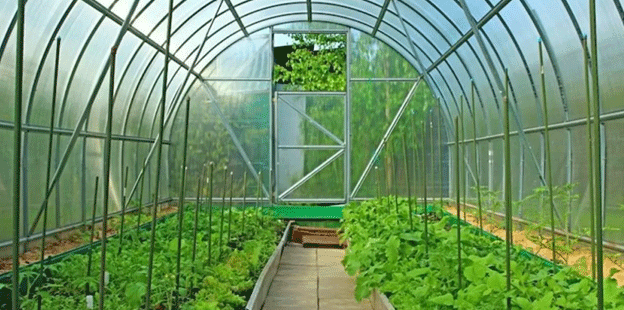The Shymkent greenhouse initiative is being constructed in two main phases. The first phase, set to cover 45 hectares, will be completed ahead of the broader second phase, which will add an additional 130 hectares, bringing the total to 175 hectares by 2025. According to recent government reports, this expansion makes it one of the most extensive agricultural investments in Kazakhstan’s history.
The facility’s annual output is projected to reach 51,000 tons of high-quality tomatoes. The crop will be distributed to Kazakhstan’s internal market and exported to key international partners, including Russia, Qatar, and the United Arab Emirates. The strategic choice of these export markets reflects rising demand for fresh and processed tomatoes, especially in countries where local production is limited.
Advanced Agricultural Technology
Alarko’s greenhouse complex will utilize cutting-edge agricultural technology, including climate-controlled environments, energy-efficient systems, and automated irrigation. Such advancements are crucial for maximizing yield and ensuring consistency in tomato quality. Precision agriculture techniques, including soil moisture monitoring and nutrient delivery systems, will be implemented to optimize plant growth and minimize resource waste.
The project’s integration of a processing plant is equally noteworthy. By adding value to the raw product through processing, the facility will create opportunities for further economic benefits and open pathways for diversifying product offerings, such as tomato paste and packaged fresh tomatoes.
Economic and Social Impact
This project is expected to deliver substantial economic benefits to Shymkent and the surrounding region. The construction and operation phases are forecasted to generate hundreds of jobs, both directly within the facility and indirectly through related service sectors. Furthermore, local farmers may have opportunities to learn from Alarko’s innovative agricultural practices, potentially leading to widespread improvements in regional farming techniques.
From an economic standpoint, the export strategy will not only boost Kazakhstan’s agricultural GDP but also strengthen trade relations with important partners. With global demand for tomatoes increasing—estimated to grow at a compound annual growth rate (CAGR) of 3.1% from 2023 to 2028, driven by the Middle East and Asia-Pacific regions—Kazakhstan is positioning itself strategically within this market.
Government Support and Investment
The success of this project would not be possible without significant support from the Kazakh government. Officials have emphasized the importance of attracting foreign investment to modernize the country’s agriculture sector, diversify the economy, and ensure food security. The government is likely to provide additional incentives, such as tax breaks and infrastructure support, to facilitate the smooth execution of this project.
The Shymkent greenhouse complex by Alarko represents a landmark development for agriculture in Kazakhstan and Central Asia. By leveraging advanced greenhouse technology and creating an efficient supply chain from cultivation to export, the project has the potential to transform tomato production in the region. If successful, it could serve as a model for future agricultural investments, underscoring the importance of foreign partnerships and innovation in enhancing food production and export capabilities.










